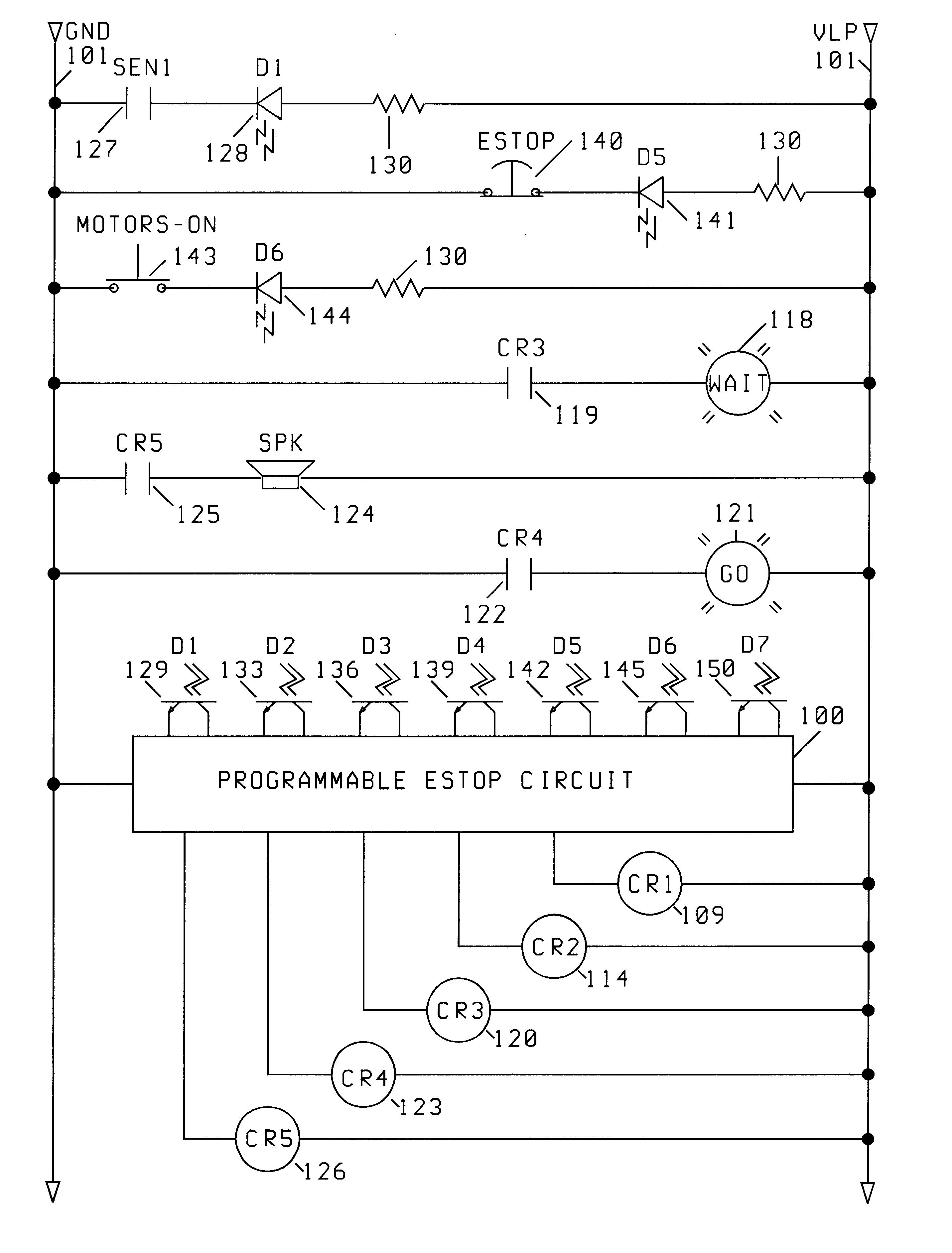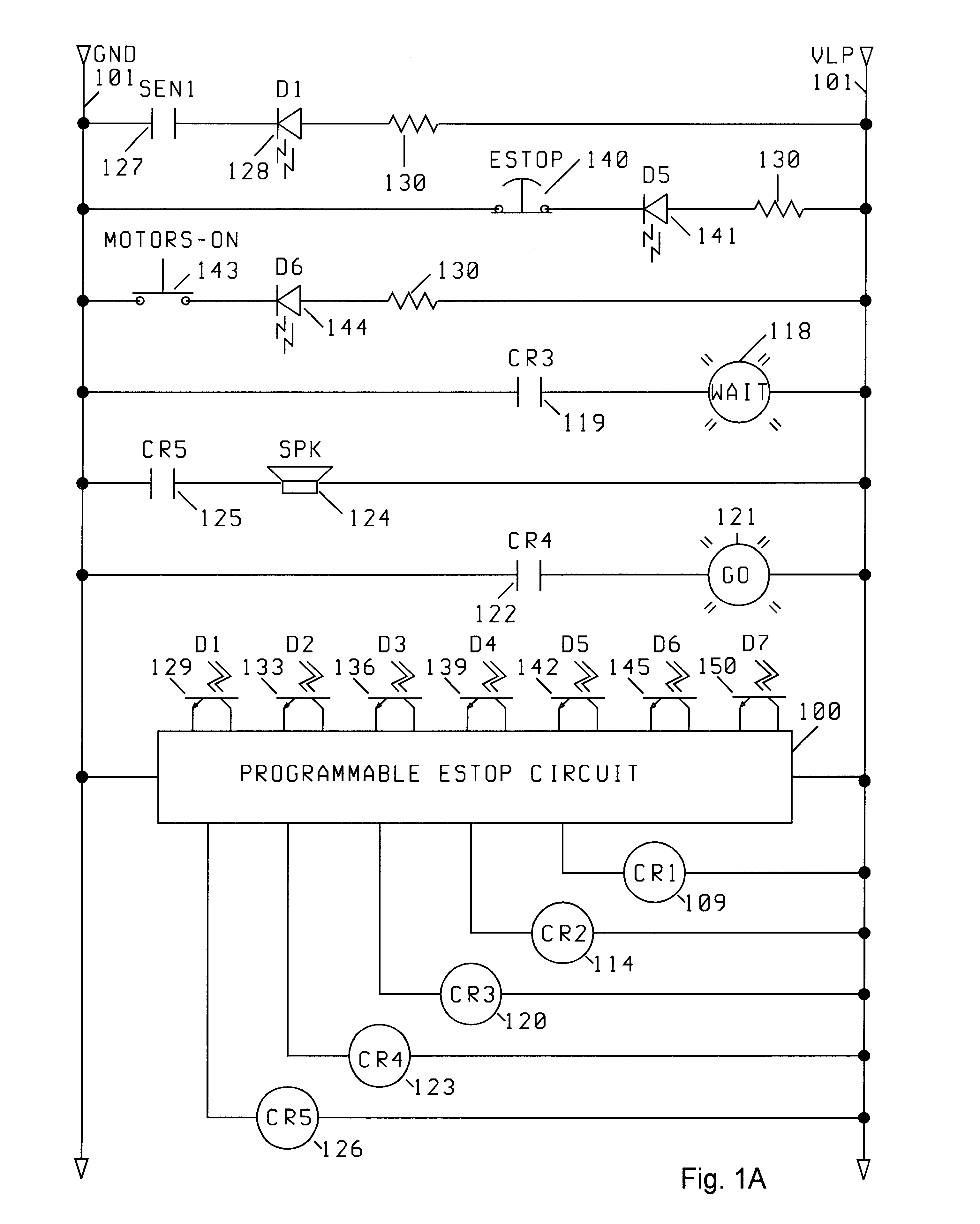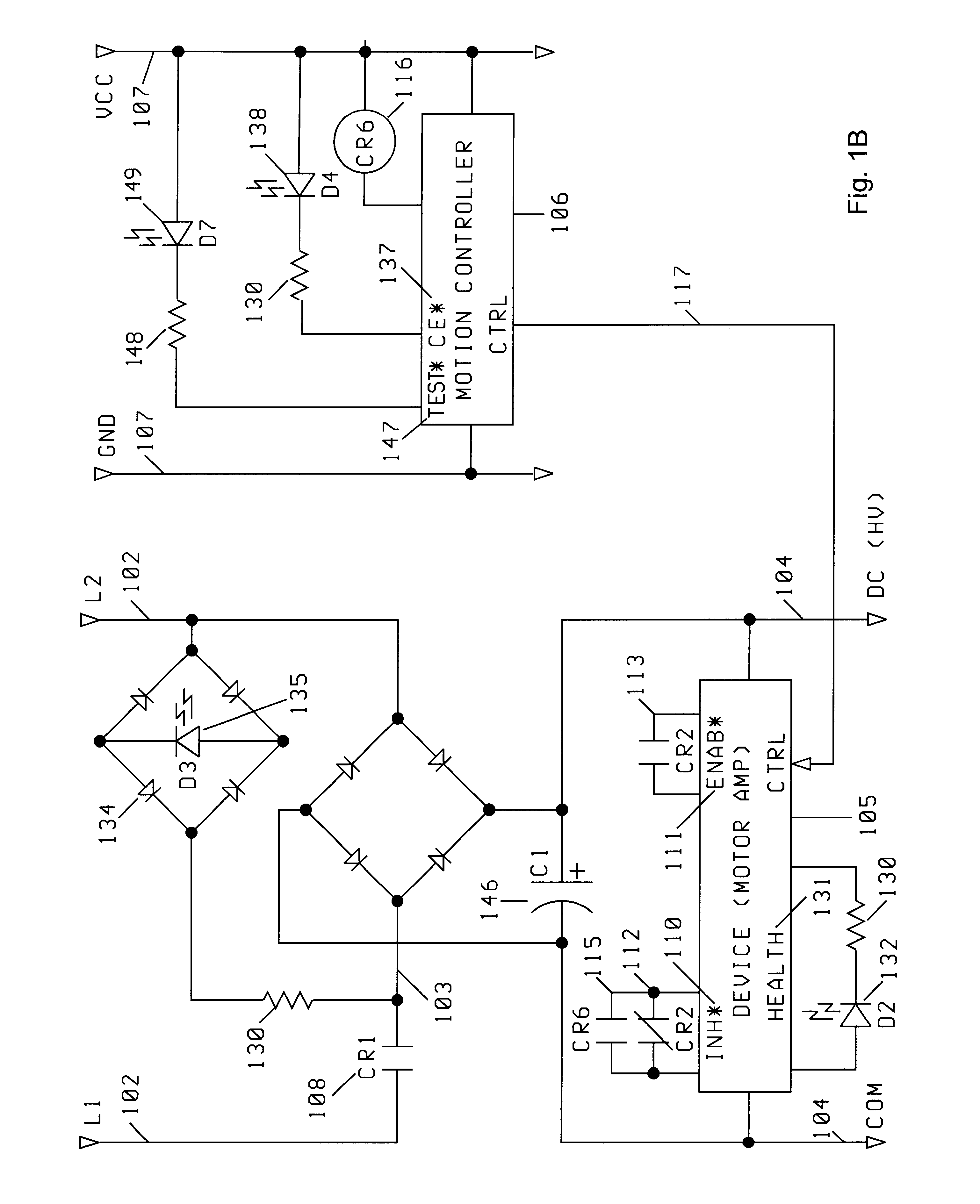Programmable emergency-stop circuit with testing
a technology of emergency stop circuit and testing circuit, which is applied in the direction of slip coupling, program control, instruments, etc., can solve the problems of power loss (i.e., shutting off), return of machine to unsafe use, wear and tear of lever switch,
- Summary
- Abstract
- Description
- Claims
- Application Information
AI Technical Summary
Benefits of technology
Problems solved by technology
Method used
Image
Examples
Embodiment Construction
Referring now to the figures in which like numerals represent like elements throughout several views, the present invention comprises a programmable emergency-stop circuit 100 that is programmable on multiple levels and provides advanced functions not found in other systems. The circuit centralizes the control of high voltage motor power into one place, by providing connections for, in its minimum configuration, several different kill switches, a motors-on button, and an AC motor power relay coil. In contrast with the traditional emergency-stop circuit, which has a serially connected architecture, distributed throughout the machine, the present circuit adopts a more centralized topology. Kill switches, emergency-stop and motors-on buttons, computer ready, watchdog, and test signals are all conveniently connected in one location, alongside the AC motor power relay coil driver.
As described in more detail hereinafter, the invention enhances the traditional emergency-stop circuit by (1)...
PUM
 Login to View More
Login to View More Abstract
Description
Claims
Application Information
 Login to View More
Login to View More - R&D
- Intellectual Property
- Life Sciences
- Materials
- Tech Scout
- Unparalleled Data Quality
- Higher Quality Content
- 60% Fewer Hallucinations
Browse by: Latest US Patents, China's latest patents, Technical Efficacy Thesaurus, Application Domain, Technology Topic, Popular Technical Reports.
© 2025 PatSnap. All rights reserved.Legal|Privacy policy|Modern Slavery Act Transparency Statement|Sitemap|About US| Contact US: help@patsnap.com



